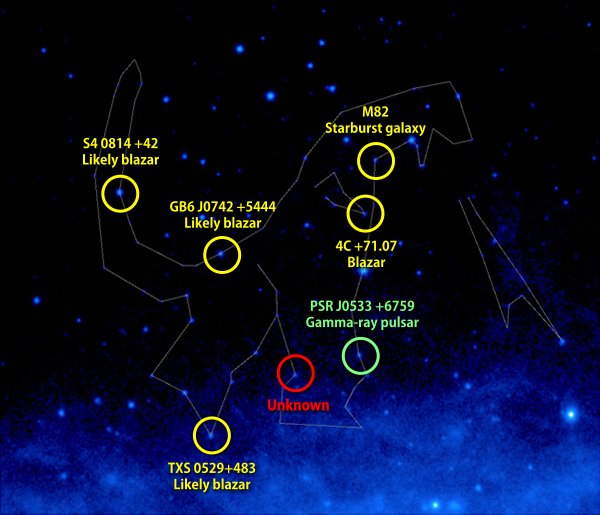You’ve probably heard of the names Ursa Major, Orion, Cassiopeia, and Gemini back in high school when you had stargazing activities with the rest of the class. These star constellations sure are fascinating when you look up the night sky and may even prompt you to wonder about the myth behind such patterns in the sky. While some of the names given to star patterns are usually taken from mythologies and Latin words.
NASA (National Aeronautics and Space Administration) has also been known to give out peculiar star names relative to popular movies such as Doctor Who’s “Tardis”, Star Trek’s “Starship Enterprise” and “The Incredible Hulk” from The Incredible Hulk itself.
And now, the space agency has made another announcement about the new 21 gamma-ray constellations. Curiously, they named one of the constellations after a famous giant lizard monster which we know of, thanks to the influence of Japanese entertainment.
You guessed it right–the constellation was named after Godzilla.

According to NASA, “Godzilla ranks as one of cinema’s most famous monsters and is among the most recognizable symbols of Japanese popular culture.”
NASA’s Fermi space telescope has detected the gamma rays, causing the team to come up with a new set of constellations, which now include the one named after the gigantic lizard from Japan.
The NASA team thought of this character because of its trademark ‘heat ray’ weapon. “This bears at least a passing resemblance to gamma-ray jets associated with black holes and neutron stars.” The emitted gamma-ray by the constellation looks similar to kaiju’s nuclear breath.

Just like the process of evolution and other scientific breakthroughs, the universe is made up of hundred billion stars where astronomers continue to examine the neighboring galactic cities. Inevitably, experts will come across some odd and bizarre space stuff.

